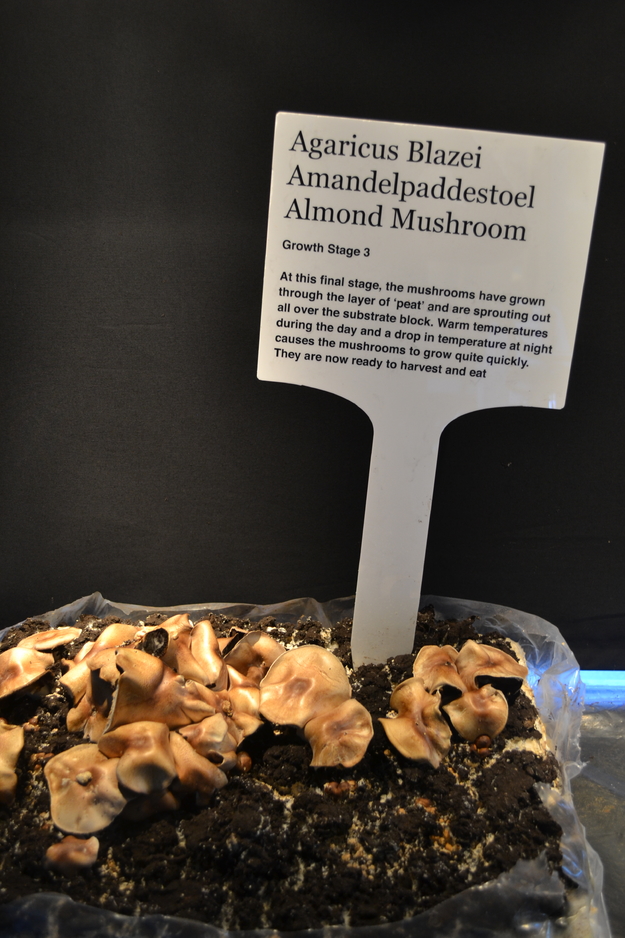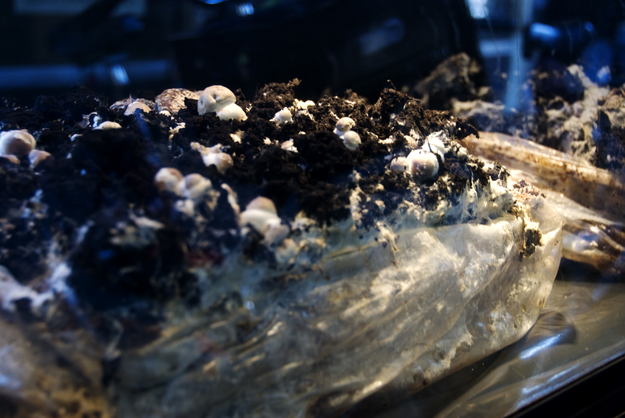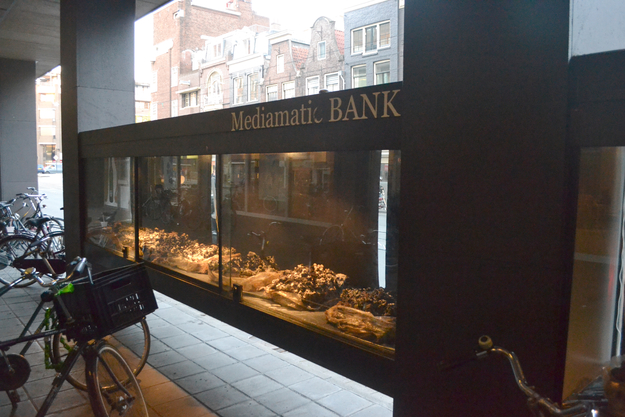About
In the wild, almond mushrooms grow on dead leaves, but inside they prefer a mixture of horse- and chicken manure, wheat straw, and gypsum. The almond mushroom is considered to be an exclusive mushroom, tasting subtlety of almonds and a hint of aniseed. The funky almond taste is due to certain benzylic aromatic compounds, like methyl benzoate - the same gas that police dogs are trained to smell when sniffing out cocaine. It's also known as "princess matsutake".
Growing process
Stage 1
A mixture of compost and nutrients has been inoculated with the spores for the Agaricus blazei Murill. This substrate mixture will remain sealed in this specially designed plastic casing during this first stage of the growing process. This stage lasts approximately 21 days, during which the spores will grow and multiply, weaving a web of mycelium through the substrate.
Stage 2
At this second stage of the growing process, the mycelium has covered the substrate block. The top of the plastic casing that was on during the first stage is cut off and a mixture of 'peat', 3-4cm high, has been placed over the top and sides of the substrate block.
Stage 3
At this final stage, the mushrooms have grown through the layer of 'peat' and are sprouting out all over the substrate block. Warm temperatures during the day and a drop in temperature at night causes the mushrooms to grow quite quickly. They are now ready to harvest and eat.


